#Basílica de San Francisco
Text

14 notes
·
View notes
Photo




Basílica y Convento de San Francisco de Jesús (Lima - Perú) vista desde la plaza y su pileta con su Fachada Barroca, pasando desde su Atrio Mayor, la Biblioteca Gótica y la sillería coral barroca del siglo XVII.
#Basílica y Convento de San Francisco de Jesús#Arquitectura Barroca#conventos y castillos#cultura colonial#siglo XVI#Monjes y abads#Lima - Peru#Ordenes monásticas#arte y cultura#cultura Gotica#cigarros pall mall#Ron Cartavio#Hot Topic#vans classics#vans old school
3 notes
·
View notes
Text
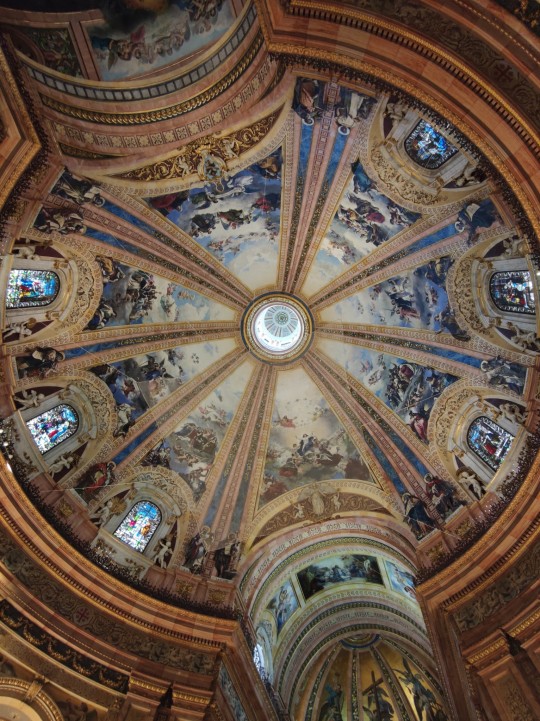
Cúpula de la Basílica de San Francisco el Grande, Madrid
Foto Antonio Íñigo 2023, 23 de junio
161 notes
·
View notes
Text

San Bernardino de Siena predicando ante Alfonso V de Aragón es un lienzo realizado por Francisco de #Goya para la Basílica de San Francisco el Grande de Madrid, donde aún se conserva, en la década de 1780.
#franciscanos#familiafranciscana#avemaria#hailmary#terciariosfranciscanos#jesus#franciscano#jesuschristo#sanfrancisco#terciariofranciscano
56 notes
·
View notes
Photo

Calle Defensa. Basílica y marquesina enfrentadas. Monserrat. #buenosaires #monserrat #arquitectura #archdaily #archilovers #urban #urbex #cascohistorico #patrimonio #caba #buenosairescity #buenosairesciudad #buenosairesciudad #ciudad #city #cityscapes #sanfrancisco (en Basílica de San Francisco (Buenos Aires)) https://www.instagram.com/p/CqVuOVUukOq/?igshid=NGJjMDIxMWI=
#buenosaires#monserrat#arquitectura#archdaily#archilovers#urban#urbex#cascohistorico#patrimonio#caba#buenosairescity#buenosairesciudad#ciudad#city#cityscapes#sanfrancisco
13 notes
·
View notes
Photo

#花 #flowers . #ハナ #はな #flower #Madrid #マドリード #スペイン #Spain #旅行 #クリスマス #Christmas #ペン習字 #筆ペン #漢字 #書道 #書法 #書遊 #毛筆 #墨 #習字 #日本文化 #筆文字 #文字 #和文化 #創作書道 #インスタ書道部 #書道好きな人と繋がりたい (at Real basílica de San Francisco el Grande) https://www.instagram.com/p/CmbrL64sGFJ/?igshid=NGJjMDIxMWI=
#花#flowers#ハナ#はな#flower#madrid#マドリード#スペイン#spain#旅行#クリスマス#christmas#ペン習字#筆ペン#漢字#書道#書法#書遊#毛筆#墨#習字#日本文化#筆文字#文字#和文化#創作書道#インスタ書道部#書道好きな人と繋がりたい
6 notes
·
View notes
Text
Argentina, Me Encantas
Hey friends! This past week and a half I had off for Semana de Turismo, like Spring Break in the U.S. All of the girls and I from my apartment decided to spend it in Argentina! There is so much to write about, so here is part one of my 10-day trip to Argentina.
The girls and I left early on Friday, March 31st and took a bus ride to Colonia, Uruguay, where the port is located for passengers to take a ferry to Buenos Aires. We rode on the Colonia Express ferry and enjoyed the 45-minute ride. When traveling to and from Argentina, most Uruguayans take the ferry because it’s cheaper, more convenient, and fun!
We arrived in Buenos Aires that afternoon and spent the night there. Something I immediately noticed is that Buenos Aires is HUGE! It’s so full of life, and it seems like there is always something to do (great people watching too). My first objective was to change my dollars to Argentine pesos, and it was a startling to hear people in the street yelling “cambio, cambio!”. Luckily, my friend who’s from Argentina had told me that the cuevas are wanting to exchange your dollars for pesos under the “blue dollar.” Because the rate of inflation in Argentina is between 60-70%, the Argentine peso isn’t worth much, so Argentines like to “buy” the dollar because it’s a much more stable currency. And how does this help foreigners? Essentially, tourists can either can change their dollars for pesos under an official bank and receive 170 pesos for every dollar, or they can change under the dollar blue rate and get 350 pesos for every dollar. Fortunately, one of the girls’ cousins who is studying abroad in Argentina took me to a secure place to change my dollars, so I had money to burn!
After a night of munching on empanadas and trying some delicious helado (ice cream), the girls and I woke up early the next day to catch a flight to Salta, which is in northern Argentina! We headed straight to our Airbnb after arriving, which had a gorgeous view of the whole city! We then went to eat at la Vieja Estancia (recommended by our taxi driver) and tried a regional dish of locro! It’s basically a stew with cooked meat and vegetables. We also had a glass of white wine to go with it (Torrontes) because Salta is known for their local wines and brews. My entire meal was about $7. Can you believe it?! Everything was ridiculously cheap.
After that, we roamed the city and stopped upon some beautiful churches, including the Basílica Menor y Convento de San Francisco. I noticed that people are very reverent and respectful in the Catholic churches. Even if they are just stopping by to snap a picture, an Argentine will kneel and do the sign of the cross before leaving. The faith is an integral part of Argentines’ lives.
If you’re traveling to Salta, you must visit a peña. I had found through my research that peñas are restaurants in northern Argentina that have live folk music! I had asked the Airbnb host where the most local peña was, and she suggested La Casona del Molino. We decided to have dinner there at night! The line was long to get in and there was even some sort of security guard at the door with James Bond glasses, but once we finally got in, sat and watched a group of four play the guitar and tambourine and sing famous Argentine songs. There were several rooms in the Casona, each one with its own singer. I was most amazed by the fact that every Argentine knew the words to every song! The national anthem played at one point, and everyone stood and sang along. It was a special experience; I had goosebumps the whole time. Salta’s nickname is “Salta la Linda”, and for good reason.
The next morning, the girls and I rented a car to head to Tilcara-Jujuy! It was a struggle to rent the car because a lot of people had the same idea to travel to Tilcara during the break, and we couldn’t make reservations online. We finally lucked out and did the 3-hour drive through the foothills of the Andes. It was incredible to see loose horses, pigs, and lambs in the middle of the road!
We arrived and headed to our Airbnb (probably my favorite out of the 3 we stayed at). It felt like we were in the middle of nowhere, but that’s what I liked about it. We had a gorgeous view of the mountains, and because we were so high up in altitude (11,000 feet), the clouds were right above us! We went to another peña that night and listened to an incredible guitar player. He gave us a book of songs in which we could request one for him to play, and the book probably had about 200 songs in it that he knew by heart! We asked him to play “Under the Bridge” by the Red Hot Chili Peppers and “Love of my Life” by Queen. We were seated next to a group of five Argentine ladies, and at one point, they stood up and invited us to dance! We took each other’s hands and strutted around the restaurant, did the conga line, etc. Again, another experience I’ll never forget. They gave us their Instagram and told us that if we ever needed anything to let us know. Que linda!
Those were my first three days in Argentina. Stay tuned for Part Two!


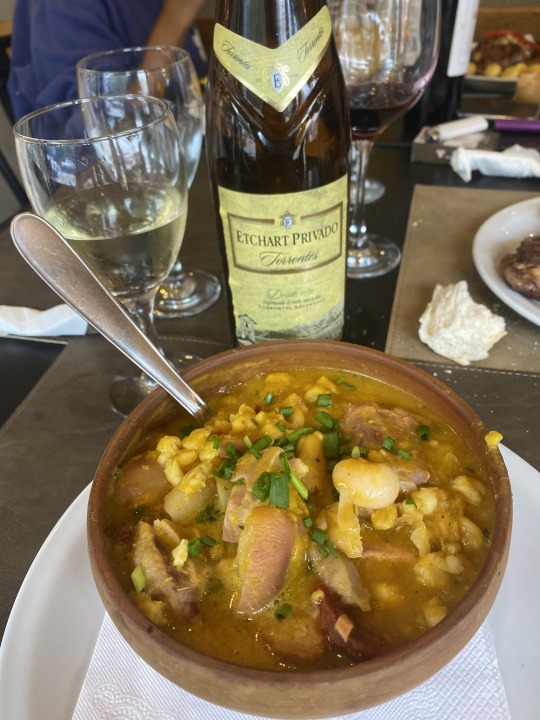

3 notes
·
View notes
Photo
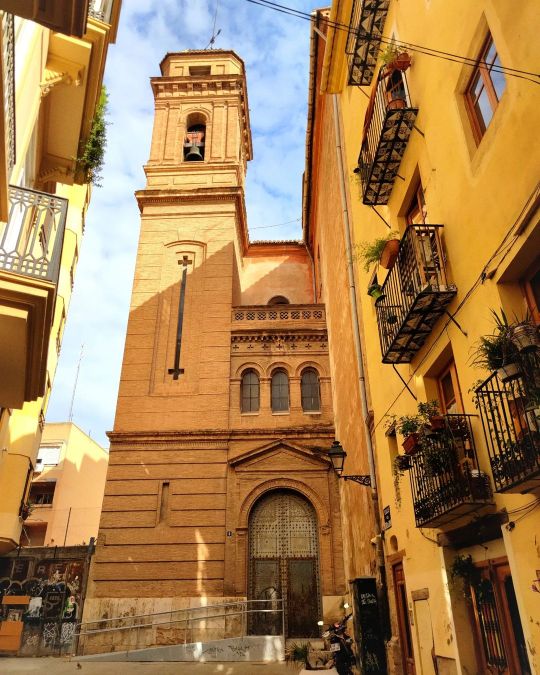
Y esta es la fachada de la iglesia de La Compañía de Jesús, que se encuentra en la Plaza de la Compañía, anteriormente llamada Plaça de les Panses, cercana a la Lonja de la Seda, en el casco histórico de Valencia. La iglesia original fue construida entre 1595 y 1631 en el lugar elegido por San Francisco de Borja para la fundación de la citada compañía, que en ese entonces se denominaba Casa Profesa de la Compañía de Jesús. No obstante, aquella iglesia fundacional fue derribada y construida esta, en 1885, obra de Joaquín María Belda Ibáñez. Esta iglesia está corona por una pequeña cúpula cubierta con teja vidriada, y posee una fachada historicista, presentando en su centro un rosetón con los radios de metal, y a un lado su campanario, de escasa altura, por lo que el templo se esconde entre el entramado urbano que le rodea. ... And this is the facade of the church of La Compañía de Jesús, which is located in the Plaza de la Compañía, formerly called Plaça de les Panses, near the Lonja de la Seda, in the historic center of Valencia. The original church was built between 1595 and 1631 in the place chosen by San Francisco de Borja for the foundation of the aforementioned company, which at that time was called Casa Profesa de la Compañía de Jesús. However, that founding church was demolished and this one built, in 1885, the work of Joaquín María Belda Ibáñez. This church is crowned by a small dome covered with glazed tile, and has a historicist façade, presenting a rose window with metal spokes in its center, and on one side its bell tower, low in height, so that the temple is hidden among the surrounding urban fabric. ... #turismo #turisme #tourism #arquitectura #architecture #fachada #façade #iglesia #church #Iglesiacatólica #catholicchurch #sagradocorazondeJesus #igvalencia #lacompañiadeJesus #igervalencia #instavalencia #valencia #comunidadvalenciana #españa #spain (en Basílica del Sagrado Corazón de Valencia) https://www.instagram.com/p/CpA9FVVLciX/?igshid=NGJjMDIxMWI=
#turismo#turisme#tourism#arquitectura#architecture#fachada#façade#iglesia#church#iglesiacatólica#catholicchurch#sagradocorazondejesus#igvalencia#lacompañiadejesus#igervalencia#instavalencia#valencia#comunidadvalenciana#españa#spain
2 notes
·
View notes
Text

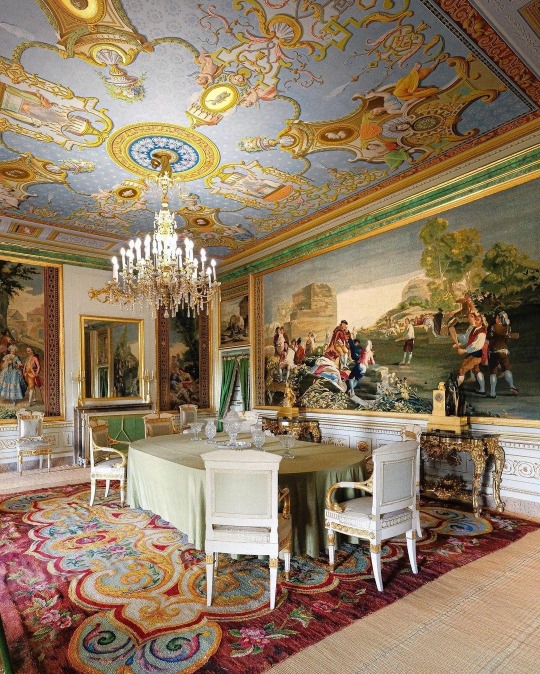
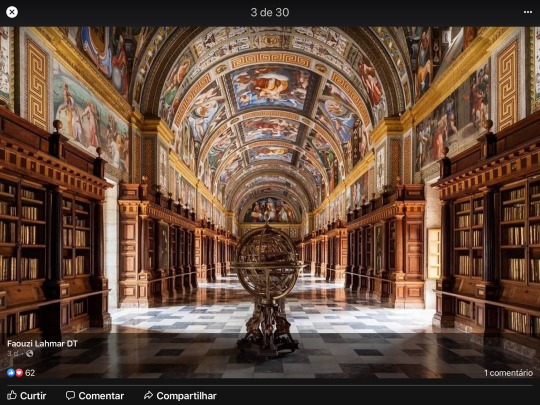

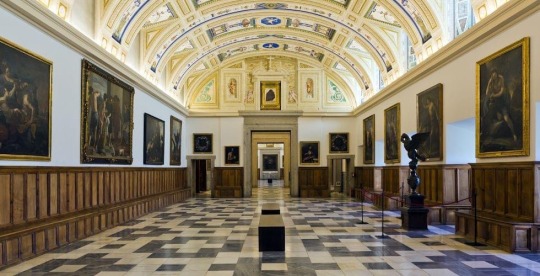


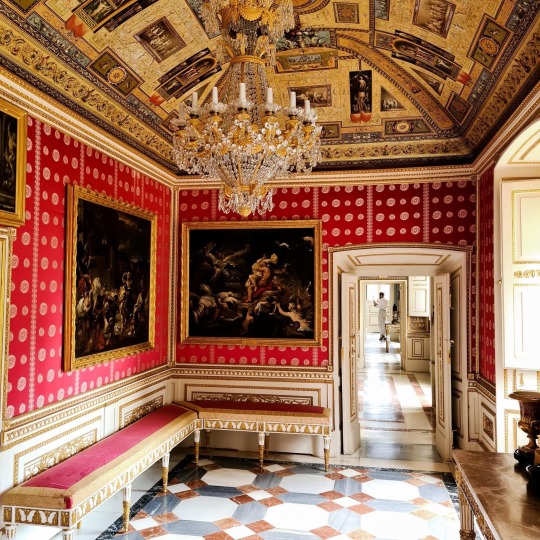
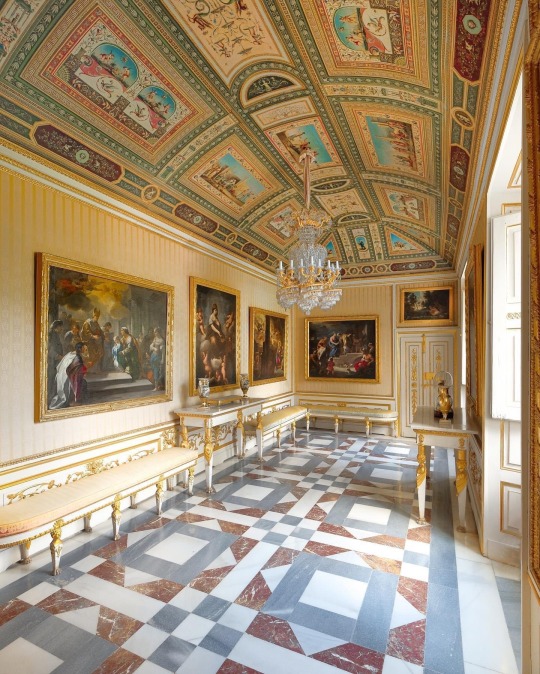

El Escorial, or the Royal Site of San Lorenzo de El Escorial (Spanish: Monasterio y Sitio de El Escorial en Madrid), or Monasterio del Escorial (Spanish pronunciation: [el eskoˈɾjal]), is a historical residence of the King of Spain located in the town of San Lorenzo de El Escorial, 2.06 km (1.28 mi) up the valley (4.1 km [2.5 mi] road distance) from the town of El Escorial and about 45 kilometres (28 miles) northwest of the Spanish capital Madrid. Built between 1563 and 1584 by order of King Philip II (who reigned 1556–1598), El Escorial is the largest Renaissance building in the world. It is one of the Spanish royal sites and functions as a monastery, basilica, royal palace, pantheon, library, museum, university, school, and hospital.
El Escorial consists of two architectural complexes of great historical and cultural significance: the royal monastery itself and La Granjilla de La Fresneda, a royal hunting lodge and monastic retreat about 5 kilometres away. These sites have a dual nature: during the 16th and 17th centuries, they were places in which the power of the Spanish monarchy and the ecclesiastical predominance of the Roman Catholic religion in Spain found a common architectural manifestation. El Escorial was both a Spanish royal palace and a monastery, although Philip II is the only monarch who ever lived in the main building. Established with a community of Hieronymite monks, it has become a monastery of the Order of Saint Augustine. It was also a boarding school: the Real Colegio de Alfonso XII.
Philip II engaged the Spanish architect Juan Bautista de Toledo to be his collaborator in the building of the complex at El Escorial. Toledo had spent the greater part of his career in Rome, where he had worked on St. Peter's Basilica, and in Naples serving the king's viceroy, whose recommendation brought him to the king's attention. Philip appointed him architect-royal in 1559, and together they designed El Escorial as a monument to Spain's role as a center of the Christian world.
On 2 November 1984, UNESCO declared The Royal Seat of San Lorenzo of El Escorial a World Heritage Site. It is a popular tourist attraction, often visited by day-trippers from Madrid – more than 500,000 visitors come to El Escorial every year.
El Real Monasterio de San Lorenzo de El Escorial es un complejo que incluye un palacio real, una basílica, un panteón, una biblioteca, un colegio y un monasterio. Se encuentra en la localidad española de San Lorenzo de El Escorial, en la Comunidad de Madrid, y fue construido en el siglo xvi entre 1563 y 1584.
El palacio fue residencia de la familia real española, la basílica es lugar de sepultura de los reyes de España y el monasterio –fundado por monjes de la Orden de San Jerónimo– está ocupado actualmente por frailes de la Orden de San Agustín. Es una de las más singulares arquitecturas renacentistas de España y de Europa. Situado en San Lorenzo de El Escorial, ocupa una superficie de 33 327 m², sobre la ladera meridional del monte Abantos, a 1028 m de altitud, en la sierra de Guadarrama. Está gestionado por Patrimonio Nacional.
Conocido también como Monasterio de San Lorenzo El Real, o, sencillamente, El Escorial, fue ideado en la segunda mitad del siglo xvi por el rey Felipe II y su arquitecto Juan Bautista de Toledo, aunque posteriormente intervinieron Juan de Herrera, Juan de Minjares, Giovanni Battista Castello El Bergamasco y Francisco de Mora. El rey concibió un gran complejo multifuncional, monacal y palaciego que, plasmado por Juan Bautista de Toledo según el paradigma de la Traza Universal, dio origen al estilo herreriano.
Fue considerado, desde finales del siglo xvi, la Octava Maravilla del Mundo, tanto por su tamaño y complejidad funcional como por su enorme valor simbólico. Su arquitectura marcó el paso del plateresco renacentista al clasicismo desornamentado. Obra ingente, de gran monumentalidad, es también un receptáculo de las demás artes. Sus pinturas, esculturas, cantorales, pergaminos, ornamentos litúrgicos y demás objetos suntuarios, sacros y áulicos hacen que El Escorial sea también un museo. Su compleja iconografía e iconología ha merecido las más variadas interpretaciones de historiadores, admiradores y críticos. El Escorial es la cristalización de las ideas y de la voluntad de su impulsor, el rey Felipe II, un príncipe renacentista.
El 2 de noviembre de 1984, la UNESCO declaró el Monasterio y Sitio de El Escorial como Patrimonio de la Humanidad. Es una de las principales atracciones turísticas de la Comunidad de Madrid. El conjunto monumental recibe más de 500 000 visitantes al año.
1 note
·
View note
Photo

VIRGEN DEL VALLE y VIRGEN DE LA CARIDAD DEL COBRE. VIRGEN DEL VALLE. La Virgen del Valle, conocida también como Nuestra Señora del Valle, es una advocaciónde la Virgen María originada en el estado Nueva Esparta, Venezuela. Se la venera en los estados de Anzoátegui, Nueva Esparta, Sucre, Monagas, Delta Amacuro, parte de Bolívar, y en la ciudad de Zaraza en el estado Guárico. Es patrona, de la Isla de Margarita, del Oriente venezolano; así como de los pescadores y de la Armada Nacional de Venezuela. Su festividad tiene lugar el 8 de septiembre. Algunos de los títulos que recibe la Virgen del Valle son: Virgen Milagrosa, Madre de los pescadores, Protectora de los Neoespartanos, Vallita. El 8 de septiembre se realiza una procesión de la Virgen por todo el pueblo de El Valle del Espíritu Santo y se oficia una misa concelebrada con la asistencia de los obispos de los estados del oriente de Venezuela. VIRGEN DE LA CARIDAD DEL COBRE. Nuestra Señora de la Caridad del Cobre, o la Virgen de la Caridad del Cobre, Caridad del Cobre o simplemente Cachita, es una de las advocaciones de la Virgen María. Es la Patrona de Cuba, este solemne nombramiento fue proclamado por el papa Benedicto XV en el año 1916. Posteriormente en un viaje realizado por San Juan Pablo II a la isla de Cuba en el año 1998, coronó con gran dignidad a la Virgen como Patrona de Cuba. La imagen mariana se venera en la Basílica Santuario Nacional de Nuestra Señora de la Caridad del Cobre en Santiago de Cuba. En la santería Orishase identifica con Oshun. Benedicto XVI le otorga el 26 de marzo de 2012 la Rosa de Oro de la Cristiandad, con motivo del cuadringentésimo aniversario de la aparición de la imagen. El Papa Francisco, en su vista a la isla caribeña, en septiembre de 2015, y con motivo la conmemoración de los 100 de la consagración de Cuba a la Virgen de la Caridad del Cobre o "Cachita " como la conocen los cubanos, por parte del Papa Benedicto XV; decretó el Año Santo Excepcional de la Misericordia. #virgendelvalle #virgendelacaridaddelcobre #vallita #cachita #arziade https://www.instagram.com/p/CiPpjp7uR3p/?igshid=NGJjMDIxMWI=
3 notes
·
View notes
Text
17/07/2022 Visite à La Paz
Matinée culturelle en visitant la Basílica Menor de San Francisco (d'architecture baroque andin construite entre le XVI et XVIIIe) adjacente à la Plaza Major de San Francisco.
Sa façade comporte des éléments de l'ordre franciscain mais aussi andin.


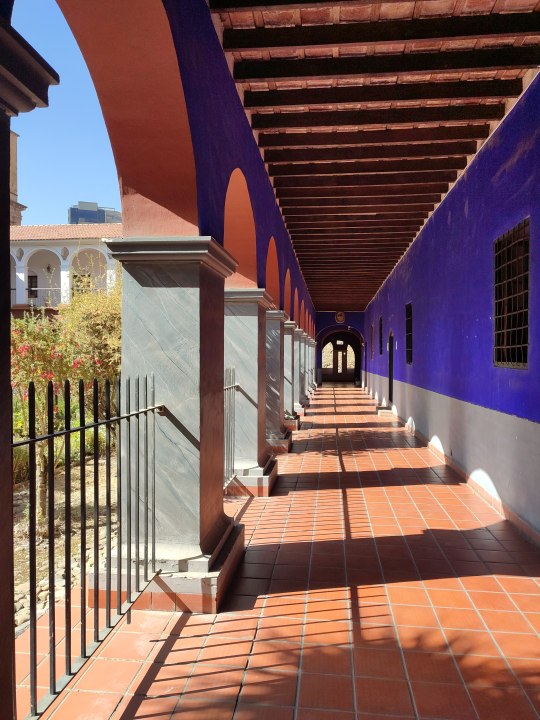

Vue depuis le sommet de la basilique vers la Plaza Major de San Francisco et le parvis du Mercado Lanza
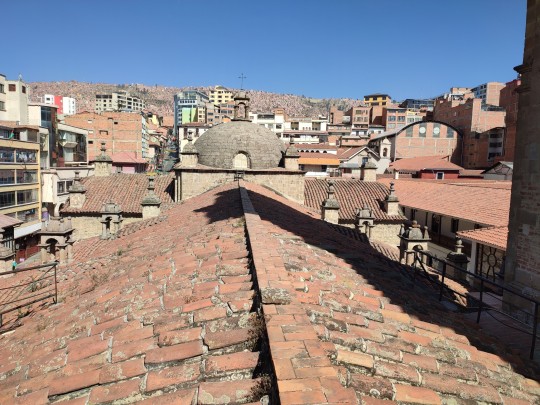

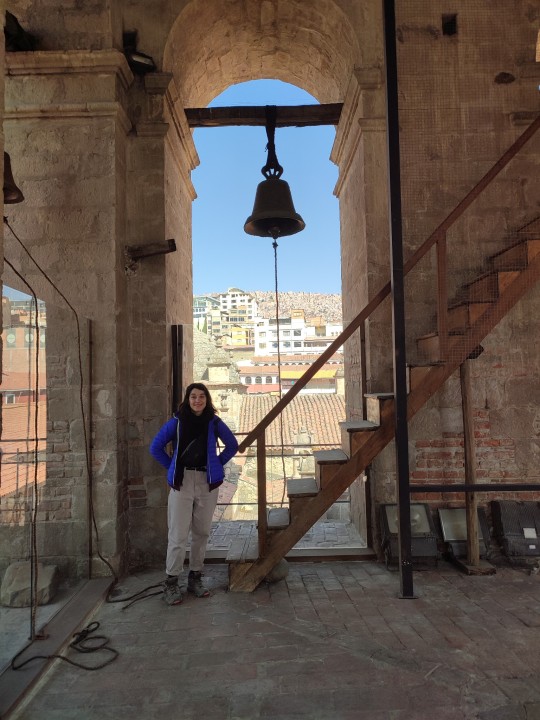


3 notes
·
View notes
Text
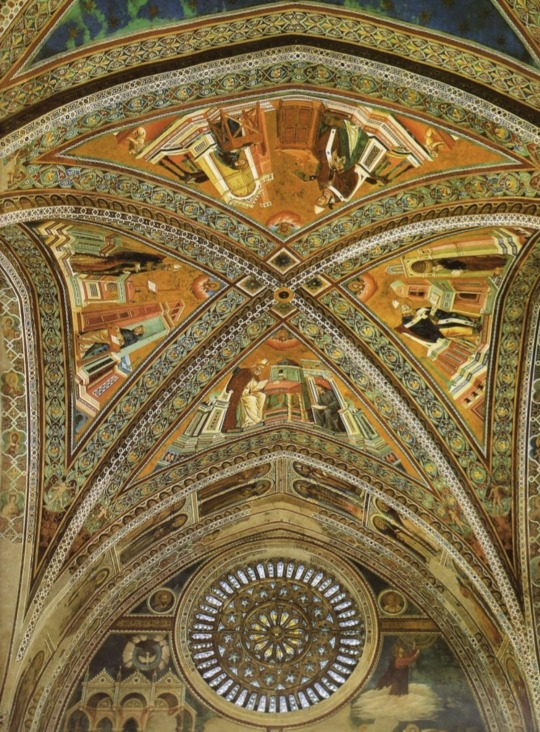

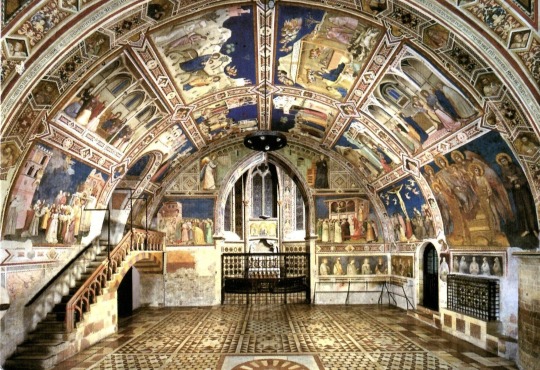
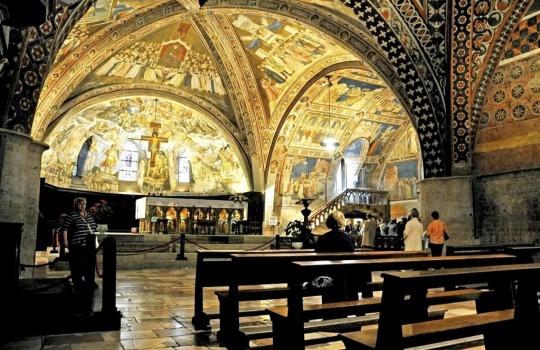
#Basílica de San Francisco#bóveda de la Iglesia Inferior con los cuatro Padres de la Iglesia.LJerónimo#Agustín#Gregorio Magno y Ambrosio.
5 notes
·
View notes
Text
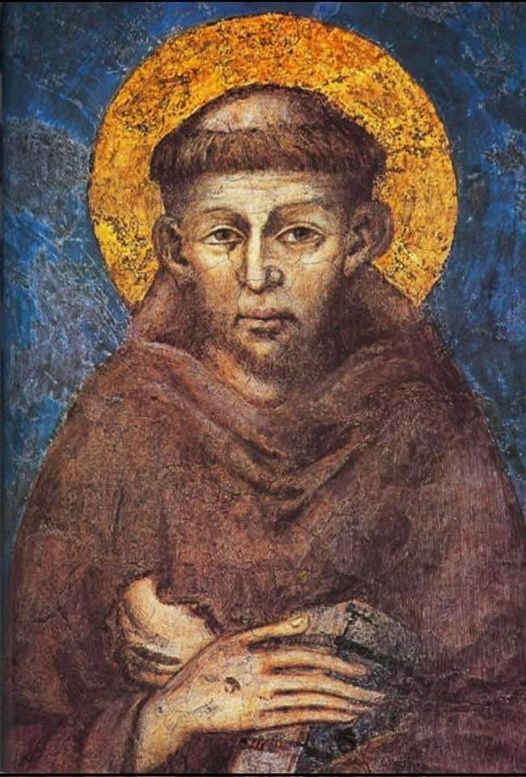
San Francisco
Pintura de Cimabue (Florencia 1240-Pisa 24 de enero de 1302)
(Español / English / Italiano)
CIMABUE, seudónimo de Cenni di Pepo, fue un pintor italiano.
Se le conoce desde 1272, y Dante le citó como el más grande de la generación anterior a Giotto.
San Francisco es una pintura al temple sobre tabla atribuida a Cimabue, fechada hacia 1290 y conservada en el Museo de la Porciúncula de la Basílica de Santa María de los Ángeles de Asís.
***
Saint Francis
Painting by Cimabue (Florence 1240-Pisa 24 January 1302)
CIMABUE, pseudonym of Cenni di Pepo, was an Italian painter.
He is known from 1272, and Dante cited him as the greatest of the generation before Giotto.
St. Francis is a tempera on panel painting attributed to Cimabue, dated around 1290 and kept in the Porziuncola Museum at the Basilica of Santa Maria degli Angeli in Assisi.
***
S.Francesco
Dipinto di Cimabue (Firenze 1240-Pisa 24 gennaio 1302)
CIMABUE, pseudonimo di Cenni di Pepo. È conosciuto dal 1272, e Dante lo cita come il più grande della generazione precedente a Giotto.
San Francesco è un dipinto a tempera su tavola attribuito a Cimabue, datato 1290 circa e conservato nel Museo della Porziuncola della Basilica di Santa Maria degli Angeli di Assisi.
0 notes
Text
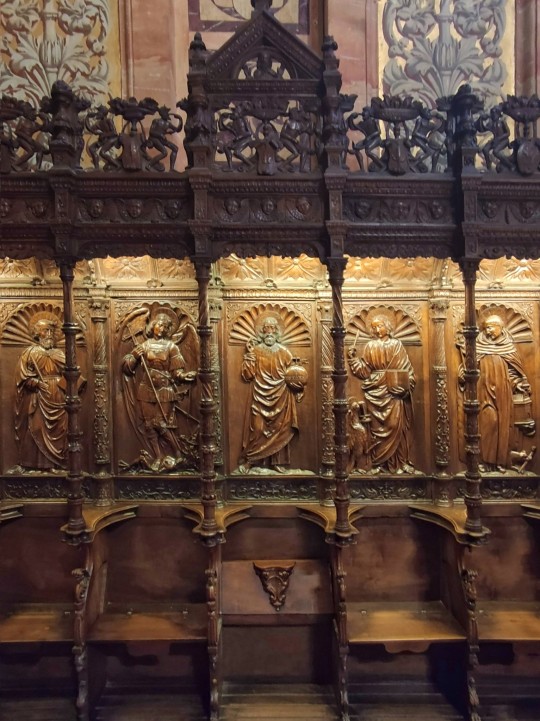
Sillería del coro de 1526 procedente del monasterio del Parral de Segovia. Basílica de San Francisco el Grande, Madrid
Foto Antonio Íñigo 2023
31 notes
·
View notes
Text
Bautismo de san Francisco de Asis. Esta obra es de 1787 y forma parte de la serie de treinta y tres escenas de la Vida de san Francisco, pintadas para la basílica de san Francisco el Grande de Madrid.
Pertenece al Museo del Prado. Intervinieron los pintores José Camarón y Bonanat, Antonio Carnicero y Manuel de la Cruz.

16 notes
·
View notes
Text

Máscara de Dante Alighieri (Máscara de Kirkup), por un escultor desconocido, siglo XVI-XVII (?), tiza. Donación de Alessandro D'Ancona (1911)
En el pasado, se creía que la obra era una máscara funeraria, extraída de un molde impreso en el rostro del difunto. Con toda probabilidad, deriva más bien del molde de un retrato escultórico perdido de Dante.
Fue vendido al Ayuntamiento de Florencia en 1911 por Alessandro D'Ancona quien, a su vez, lo había recibido como regalo en 1901 de la viuda del famoso erudito inglés de Dante Seymour Kirkup.
Según el testimonio de D'Ancona, la máscara fue encontrada por el escultor Lorenzo Bartolini hacia 1830 en Rávena, donde el poeta murió en el exilio y fue enterrado (1321).
Una hipótesis diferente, en cambio, lo relaciona con una efigie escultórica del poeta procedente de su tumba que, según una fuente histórica, estuvo en Florencia entre finales del siglo XVI y principios del XVII, donada por el arzobispo de Rávena al escultor Giambologna. También se ha supuesto que ese retrato perdido fue pintado por Tullio Lombardo, activo en la tumba de Rávena y en la adyacente basílica de San Francisco entre 1483 y 1525. En Florencia, Dante Alighieri desempeñó varios cargos políticos antes de su exilio (1302), entre ellos el de Prior del 15 de junio al 15 de agosto de 1300.
"El Palazzo Vecchio es el símbolo más antiguo de Florencia y, en tiempos de Dante, era el corazón de la ciudad. [...] Por diversas razones, al conservar aquí su máscara mortuoria tenemos la impresión de que a Dante finalmente se le concedió volver a casa. "
(de Dan Brown, Infierno, 2013)
Información el Palazzo Vecchio, imágenes de mi autoría.
1 note
·
View note